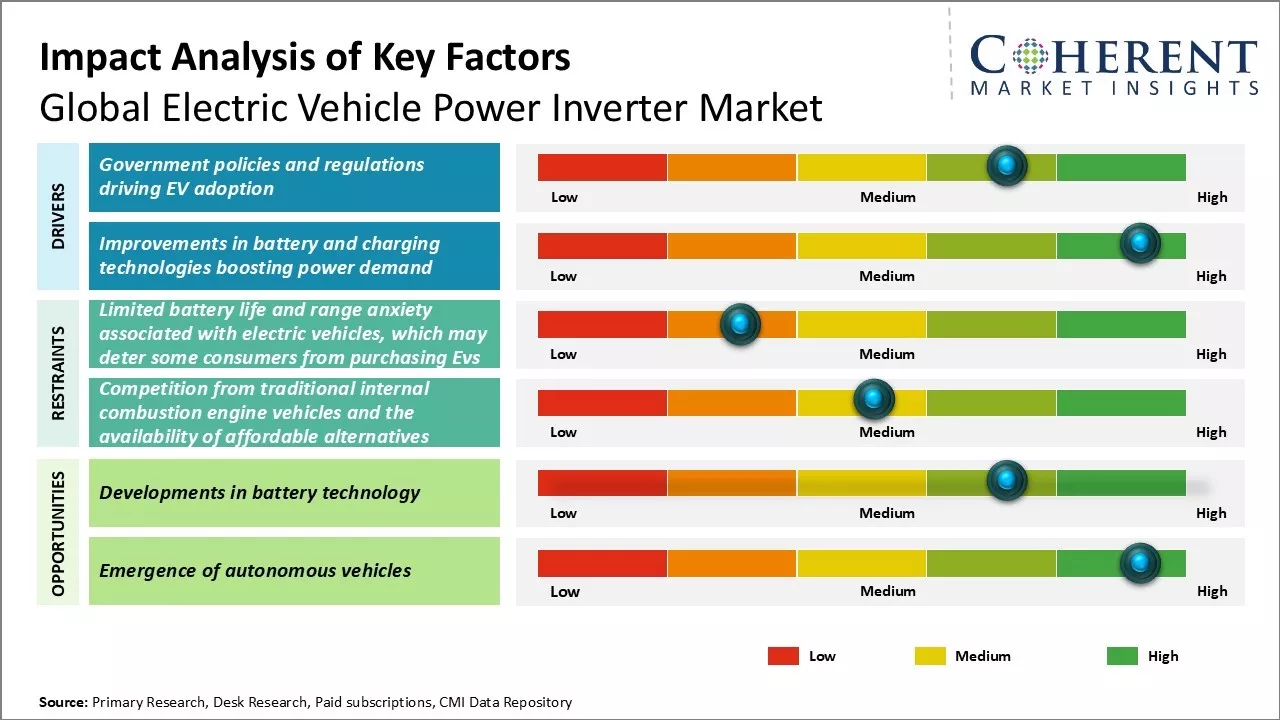The Global Electric Vehicle Power Inverter Market is estimated to be valued at US$ 8.68 Billion in 2025 and is expected to reach US$ 36.77 Billion by 2032, exhibiting a compound annual growth rate (CAGR) of 22.9% from 2025 to 2032.

To learn more about this report, Request sample copy
Factors such as rising sales of electric vehicles globally along with initiatives by governments across countries to promote the adoption of electric vehicles are expected to significantly drive the demand for electric vehicle power inverters. Growing consumer inclination towards sustainable mobility solutions along with increasing investments by leading automotive OEMs in developing electric vehicle fleet are further expected to support the growth of this market between 2025 and 2032. Key players in the market are also focusing on the development of innovative inverters with higher power ratings and efficiencies to cater to the evolving needs of OEMs. This will further fuel the electric vehicle power inverter market growth over the next few years.
Government policies and regulations driving EV adoption
Many governments around the world are pushing for greater adoption of electric vehicles as a way to reduce carbon emissions from the transportation sector. Providing financial incentives for EV purchases and establishing corporate average fuel economy standards are compelling automakers to increase their electric vehicle offerings. Some nations have even announced plans to eventually phase out combustion engine vehicles. These policy initiatives are driving increased demand for EVs, which in turn is fueling growth in the electric vehicle power inverter market.
Countries like Norway and China have shown how powerful incentives can accelerate EV uptake. Both nations now have more electric cars on the road than gasoline-powered vehicles. Learning from their success, many other large auto markets are following suit with purchase subsidies, tax exemptions, access to HOV lanes, and other perks for EV buyers. At the same time, tighter emissions regulations in Europe and China require automakers to significantly improve the fuel efficiency of new car fleets each year or face heavy fines. Compliance is nearly impossible without offering a variety of electrified models. With compliance deadlines looming, automakers have no choice but to invest heavily in electric technology to access these huge and influential markets.
Joining thousands of companies around the world committed to making the Excellent Business Solutions.
View All Our Clients